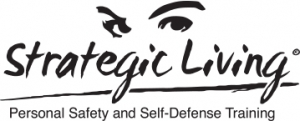“Awareness” is a key component of self-defense, yet as a practice it is ill-defined. For many of my students, the line between color-coded anxiety and recognition of real risks is blurry at best. This is exacerbated by our media environment (where violence sells anxiety, and anxiety sells airtime, and airtime sells . . . ).
Examples from my feline friends proffer useful guidance.
Know where you are vulnerable.
For example, I often shlep lots of stuff to my car. Hey, I teach self-defense classes, so I’m hauling kicking shields and handouts and mats and other bulky, unwieldy stuff. This is a vulnerable point for 2 reasons. One, my arms are usually full. Second, and more importantly, my mind is already occupied with how the heck I’m going to fit all this junk in my car (I can always drop stuff to free my hands, but it is takes more effort to drop stuff out of my head when surprised).
 |
| Sokol, ever watchful, at repose. |
Enter Sokol, my cat.
Sokol (also known as “stealth kitty”) was brought into our home as a 14 month old feral. While she’s adapted well to life as an indoor kitty, even after 7 years she hasn’t lost her feral edge. She does not like being picked up or even petted (until she solicits attention). Lap cat? No way. Ever at rest, she’s also alert to any and all new sounds. If I enter the room, she’ll keep an eye on me until she’s convinced that I’m not about to try to (gasp!) pick her up. If I’m in the room she wants to nap in, she’ll keep an eye on me as she settles in.
The key here is awareness at key points. Going back to loading my car, I know I have to leave Point A (my house, or the building where the class is held) and approach my car. I make it a point as I am leaving the building to scan the area. I’m looking for anyone who is paying attention to my activities. I get to my car. Before I unlock my car and open the trunk, I again scan the area. And if it takes more than a second or so to rearrange my baggage, I pause to scan again. And, if necessary, again.
I have to say I’ve yet to encounter a scary person. However, I have encountered the first spring blooms on the wild roses, the emergence of the fall crocuses, and a hummingbird almost within arms’ reach. These little happenstances round out life, and are constant reminders on why you want to stay safe. To be able to enjoy daily special moments, sans the trauma of a distressing surprise.
